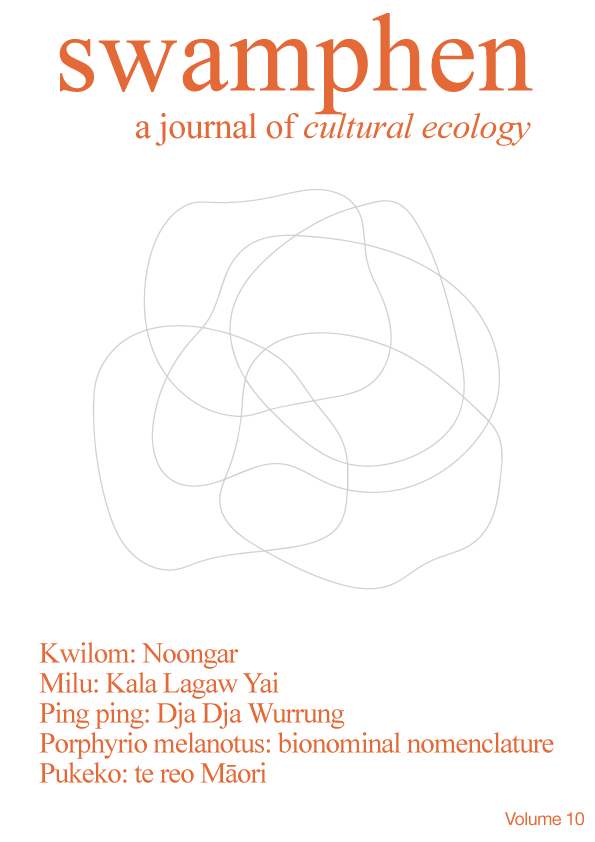Tapestries of Poison
(Towards Nurture Writing)
Abstract
Cuz and I are talking about how our ancestors used poison to score a feed. I have questions about nyannum. How do you poison a fish and not be affected when you eat it? Wouldn’t it make you sick? Stun sometimes, not kill, Cuz says, and sometimes things are left to rise, to sit in the water for a while so that toxins are released. We both getting hungry, sitting by the water, talking about fish. Nyannum contains poison that only affects fish. Stunned in a small rock pool. Perfect for a grab bag. Nyannum leaves are heart-shaped and shiny. Fish also stunned in a trap. Our people are known for making beautiful traps. Our architecture is destroyed for other architecture. A light rail takes precedence over the ancient traps that have been there for thousands of years. Under neo-colonial rule, they can’t both co-exist. The ghosts surface in the new city. Is nature writing a white-settler literature? Perhaps you would think so if you browsed the genre. It is only recently we’ve seen First Nations names come up in discussions of the Australian canonistic spectrum of nature writing, environmental literature and ecopoetics. A few names, cherrypicked to be on reading lists and citations. This inclusion seems to be a tokenistic gesture rather than a recognition of sovereignty, or a reading and writing … and storytelling … and a knowing … that has always been present.
Downloads
Published
Issue
Section
License
Authors who publish with this journal agree to the following terms:- Authors retain copyright and grant the journal right of first publication with the work simultaneously licensed under a Creative Commons Attribution License that allows others to share the work with an acknowledgement of the work's authorship and initial publication in this journal.
- Authors are able to enter into separate, additional contractual arrangements for the non-exclusive distribution of the journal's published version of the work (e.g., post it to an institutional repository or publish it in a book), with an acknowledgement of its initial publication in this journal.
- Authors are permitted and encouraged to post their work online (e.g., in institutional repositories or on their website) prior to and during the submission process, as it can lead to productive exchanges, as well as earlier and greater citation of published work (See The Effect of Open Access).

